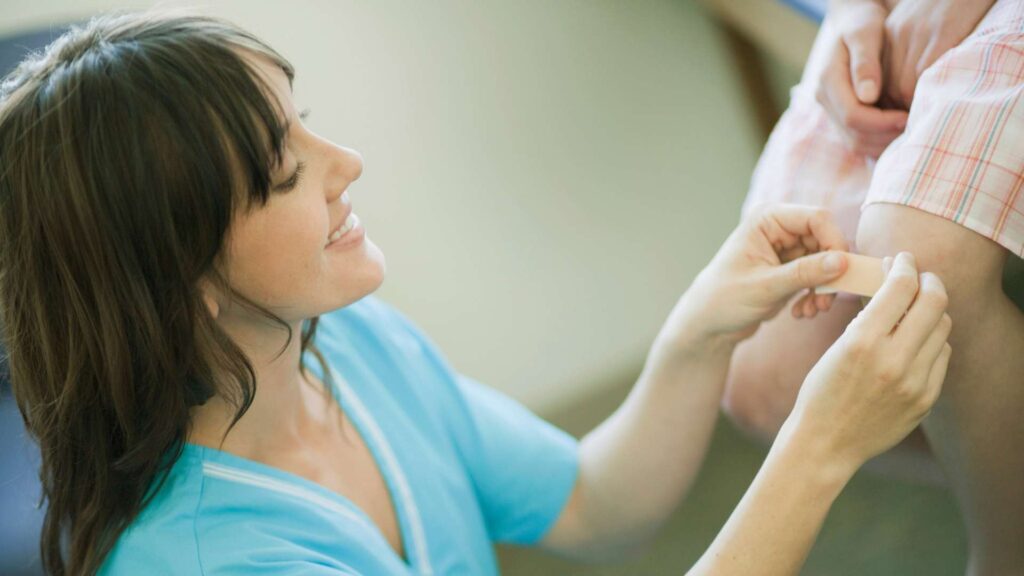Table of Contents
Remote monitoring is rapidly transforming healthcare in the U.S.. It offers new ways for patients and providers. This way, they stay connected beyond traditional office visits. People can now track vital health data from the comfort of their homes. It is a result of the rise of smart, connected devices.
This technology not only makes healthcare more convenient. However, it also enables more personalized. It also includes timely interventions. It can be like wearable trackers, glucose monitors, and blood pressure cuffs.
In this blog, we’ll dive into some of the most effective remote monitoring devices currently available. It can explore the key benefits they offer and highlight the best use cases. It helps you understand how these tools can improve daily health management.
What Is Remote Patient Monitoring (RPM)?
Remote Patient Monitoring, or RPM, involves using connected devices. They will track important health data. It can be like blood pressure, glucose levels, or heart rate. It can be securely shared that information with your healthcare provider.
This technology plays a significant role in managing chronic conditions. It supports preventive care and monitoring patients after hospital stays. Thanks to its proven benefits. RPM is gaining wider acceptance among insurers and healthcare systems. It makes it an increasingly common part of everyday healthcare.
Remote Monitoring Devices That Actually Help

Blood Pressure Monitors
Blood pressure monitors are a cornerstone. This is used to manage hypertension and heart disease. Modern connected cuffs not only measure blood pressure, but also track other vital signs. But it can also track other vital signs. But it also automatically uploads the data to your healthcare provider’s system. This seamless sharing enables doctors to track your progress in real-time. It can adjust medications promptly. It can detect any concerning trends early. This helps prevent complications like stroke or heart attack.
Glucose Monitors (Continuous Glucose Monitors or CGMs)
CGMs have revolutionized blood sugar management. It is especially for people living with diabetes. These small devices continuously measure glucose levels. This is throughout the day and night. It sends real-time data to your smartphone or smartwatch. Many CGMs provide alerts if your blood sugar spikes or drops dangerously. This allows immediate action. This continuous feedback loop supports better control. It reduces the risk of emergencies.
Pulse Oximeters
Pulse oximeters measure oxygen saturation in your blood. It is a critical metric for those with respiratory conditions. It is similar as COPD, asthma, or recovering from COVID-19. It is portable and easy to use. Connected pulse oximeters send data directly to your care team. It enables timely intervention if oxygen levels fall below safe thresholds.
Wearables and Fitness Trackers
Smartwatches and fitness trackers monitor a variety of health indicators. It includes heart rate, sleep quality and activity levels. It even includes stress. These devices help users maintain healthier lifestyles. It can provide early warnings for potential issues. Wearables offer ongoing data for patients with chronic conditions. It can support preventive care. This also offers personalized treatment plans.
Weight Scales With Connectivity
Connected weight scales track your weight over time. It shares these trends with your healthcare team. This is especially important for managing conditions. It’s like heart failure and diabetes. This is where sudden weight changes can signal fluid retention or other complications. Early detection through remote monitoring helps providers intervene. This is before problems escalate.
Specialized Devices
Specialized remote monitoring devices, in addition to these common tools. It includes portable EKG monitors. It can track heart rhythm and digital inhalers. This records usage for asthma management and smart thermometers. It monitors temperature trends. These devices provide real-time data tailored to specific health conditions. It supports more precise and proactive care.
Read: How to Find Affordable Lab Testing Without Insurance
How Remote Monitoring Devices Improve Care?
Remote monitoring devices play a crucial role in catching health problems early. It is often before symptoms become severe. These tools alert both patients and providers by continuously tracking key health indicators. It can be any concerning changes. It allows for prompt intervention. This early detection can prevent complications. It avoids unnecessary hospital visits or readmissions. It benefits both the patient’s well-being and healthcare costs.
Beyond that, remote monitoring empowers patients by involving them directly in their own care. They become more engaged and motivated to stick. This is when people see their health data in real time. It is with treatment plans and lifestyle changes. At the same time, healthcare providers gain access to reliable and continuous data. This helps them make more personalized decisions. It is moving from reactive to proactive care.
Together, this approach improves outcomes. This creates a more collaborative healthcare experience.
Cost, Insurance, and Accessibility
Remote monitoring devices vary widely in price. It depends on their complexity and features. Basic blood pressure monitors or pulse oximeters might cost between $50 and $150. This is while advanced devices can range from several hundred to over a thousand dollars. It is like continuous glucose monitors or remote EKGs. Many companies offer subscription models. It includes the device, data management, and provider access, spreading costs over time. It makes it easier to budget.
Insurance coverage for remote patient monitoring is growing. It is especially under Medicare and many private insurers. Certain RPM programs are reimbursable. This is especially true when prescribed by a healthcare provider. It makes these devices more affordable for patients managing chronic conditions. It’s essential to verify with your insurance provider. It is for specific coverage details.
Additionally, many RPM devices qualify as medical expenses. Using these accounts can help offset out-of-pocket costs. It makes remote monitoring more accessible.
Privacy and Data Security
We must all understand that protecting our personal health information is crucial. This is especially true when using remote monitoring devices. This is often the case for most trusted devices and telehealth platforms. These must comply with HIPAA regulations. It sets strict standards for safeguarding your data.
Data collected by these devices is typically encrypted. This means it’s scrambled during both transmission and storage. It prevents unauthorized access.
It’s important to choose devices for a patient. These are FDA-approved or clinically validated. These products have undergone rigorous testing. They will meet safety and accuracy standards.
Also, you must always review the privacy policies. This goes for any apps or services you use. You can avoid sharing sensitive information over unsecured networks.
Taking these steps helps keep your health data safe. This allows for the benefit of remote monitoring.
Limitations of Remote Monitoring Devices
Remote monitoring devices offer many benefits. But they do come with some limitations. First, they rely heavily on patients being comfortable with technology. They have reliable internet access. This can be a barrier for some. It is especially in rural or underserved areas.
Another challenge is the potential for “data overload.” Patients and providers might struggle to interpret the constant stream of data without proper guidance. This leads to confusion or unnecessary anxiety. Effective use requires ongoing support and clear communication to ensure optimal results. This ensures optimal results.
Lastly, remote monitoring is not a substitute for in-person monitoring. It is not suitable for in-person exams or emergency care. Some tests, physical evaluations, and urgent situations still require face-to-face visits. It comes with healthcare professionals. This will ensure the best outcomes.
Tips for Choosing the Right Remote Monitoring Devices
You can start by matching remote monitoring to your specific health needs or goals. This is especially true when selecting a remote monitoring device. For example, if you have diabetes, a continuous glucose monitor would be an ideal choice. It is while blood pressure monitors work best for managing high blood pressure.
Next, verify that the device is compatible. They must align with your healthcare provider’s platform or the telehealth service you use. This ensures your data will seamlessly be shared with your care team. It is best suited for better monitoring and support.
Finally, you must look for devices that are clinically validated or FDA-approved. It will guarantee accuracy and safety. It’s also a good idea to confirm what is covered by insurance. You just need to know whether your insurance or Medicare covers the device or related services. It can help reduce costs.
Check this out: How Telehealth Is Changing Everyday Healthcare Access
Quick Comparison Table
| Device Type | Average Cost | Conditions Managed | Key Benefits | Limitations |
| Blood Pressure Monitor | $50 – $150 | Hypertension, heart disease | Easy home use, direct data sharing | Requires correct use for accuracy |
| Glucose Monitor (CGM) | $200 – $1,000+ | Diabetes | Continuous monitoring, alerts | Higher cost, sensor replacements |
| Wearables (Smartwatches) | $100 – $400 | General health, fitness, stress | Tracks heart rate, sleep, activity | Limited medical accuracy |
| Pulse Oximeter | $30 – $100 | COPD, asthma, COVID recovery | Quick oxygen level checks | Spot checks only, not continuous |
| Connected Scale | $50 – $150 | Heart failure, weight management | Tracks weight trends, data sharing | Doesn’t provide detailed health info |
Conclusion
Remote monitoring devices put real-time health data directly in patients’ hands, empowering providers to deliver more personalized and timely care. Choosing the right device can improve health outcomes, lower costs, and provide greater peace of mind.
If you’re managing a chronic condition or exploring proactive healthcare options, talk with your provider about remote monitoring solutions that fit your needs — and complement them with easy, affordable virtual care through Beem Health. With $0 doctor visits via Teladoc, savings on prescriptions, and holistic family protection, Beem helps you stay connected to your health anytime, anywhere.
Stay proactive — download the Beem app and take control of your health from your phone today.















































